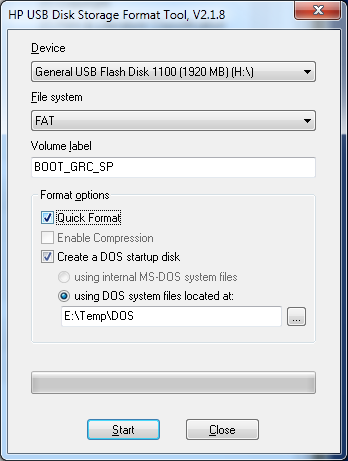Hello I have windows 7 installed on my PC and I have another HDD which I connect to my pc through USB How can I install Windows 2008 R2 Server on.
I want to install a full copy of Server 2008 R2 onto a USB drive and boot from that USB. Microsoft allows this configuration for Windows Hyper-V Server 2008 R2, but says it's not possible for standard Windows. I don't believe them. I'm hoping the collective wisdom of Ars can help me towards a solution. I've done the boot-from-USB process with both Hyper-V Server and ESXi. It works great. However, for licensing reasons, I want a full copy of Server running as the hypervisor.
Here's the starting point, Microsoft's instructions to OEMs for deploying Hyper-V Server on USB: Near the top is. The UFD must be a non-removable, internal component built into the server system as described in the 'OEM Policy for Deploying Microsoft Hyper-V Server 2008 R2 on UFD' section of this document. Canon Mf6550 Download Standby Error. The removable-media bit (RMB) in the STORAGE_DEVICE_DESCRIPTOR storage structure corresponding to the device must be set to zero (0) to indicate that it is non-removable media.

For more information about setting the RMB, see STORAGE_DEVICE_DESCRIPTOR on MSDN. This requirement actually isn't too hard to overcome. I've found several websites with tools and instructions for a limited set of flash devices. It appears to be a function of the controller of the UFD, and if you pick smart, you're good to go. Near the bottom is the following text.
Additional Information Although Microsoft Hyper-V Server 2008 R2 is built with components of Windows Server 2008 R2, some changes have been made specifically to Microsoft Hyper-V Server 2008 R2 in order to support boot from USB. Timeout for boot device increase To ensure that the system can properly boot from a flash device, the default PollBootPartitionTimeout registry key value has been increased.
This registry key is used to control how long the kernel waits for PnP to surface the boot disk before it stops with bugcheck code 0x7B. The default setting for Microsoft Hyper-V Server 2008 R2 has been set to 30000, in order to provide more time for flash devices to respond, so no additional action is required for OEM partners. In Windows Server 2008 R2, this key is not populated, and has a much smaller default value determined in the operating-system kernel. * Registry Key: HKLM SYSTEM CCS Control PnP PollBootPartitionTimeout * Registry Value: 30000 USB drivers load during boot To allow the system to load from an embedded USB flash device, the USB drivers are loaded during boot, rather than on demand. This is the default behavior in Microsoft Hyper-V Server 2008 R2, so no additional action is required for OEM partners. The registry key is easy enough to fix by mounting the VHD and editing the registry. So, it seems there are two major hurdles.
The more substantial problem is loading USB drivers at boot. I found some instructions for doing this with WinXP that seem fairly straight-forward. Unfortunately I didn't save the URL, but the jist is that you have to crack open the ISO, unpack some files, change.INF entries for the USB drivers (telling windows when to initialize them), then re-pack the files and ISO. Once you install from this modified version, the USB drivers are loaded at boot WinXP works great (under most circumstances). I'll try to look it up and add it later in the thread.
I'm wondering if the Windows Server 2008 boot process is so radically different that this sort of solution wouldn't work? Are there windows-boot-process gurus out there who can provide advice? I haven't tried any of these techniques yet as I just started deep research this morning. I'll report my progress, and I encourage interested parties to contribute. Thanks to all, The Pacifyer. The reason is, as you say, the free licenses for VMs -- 4 for Enterprise and unlimited for Datacenter.
If you run Hyper-V Server (or ESX or XenServer), each and every guest has to have a license -- The costs add up quickly. But if you install Datacenter, you can run 12, 15, or 20 VMs for free. The cost savings in licenses can be huge. Consider a single Enterprise license (with 4 VMs free) at ~$1500 vs. 5 Standard licenses at ~$3000 (5 x ~$600). A Little Jazz Exercise Oscar Peterson Pdf Printer.